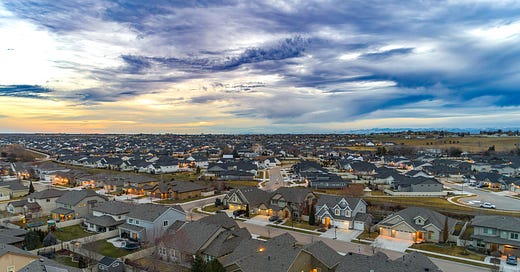Governor Little has often said that his primary goal is ensure our kids and grandkids have a chance to stay in Idaho or, if they have left, return. Soaring housing costs are an increasing barrier that must be tackled to preserve that goal.
Idaho housing is no longer low cost. Last year the National Association of Realtors found that Idaho was the second most unaffordable state, only trailing Montana, when comparing home prices to income. 49.3% of Idaho residents say housing costs put a strain on their household budget.
This year’s Boise State University’s Idaho Policy Institute’s survey of Idahoans shows that housing, particularly affordability, is the 4th highest issue they want the Idaho Legislature to address, only trailing education, jobs & the economy and healthcare.
Housing cost has risen dramatically in importance. In 2016, barely more than 40% of Idahoans thought housing was a top issue for the Legislature to tackle. In 2025, that number had jumped to 64.1%.
This year’s Idaho House has passed a bill (and the Idaho Senate Senate is about to consider) providing $100 million in property tax relief. While Idaho’s property taxes are relatively low (40th in the U.S.), any reduction has benefit.
Potentially more important, the Legislature just authorized a housing interim committee to look at the impact of local housing regulations on the housing supply and affordability before next year’s session. The focus is set to be on the cost of housing regulation by our cities and counties. But the task force should look beyond merely smoothing the way in Idaho for more subdivisions filled with large, expensive houses.
A priority should be expanding rental housing. Roughly one-third of all Idahoans are renters. Statewide we are seeing lots of large, relatively expensive, apartment complexes being built. In my hometown of Idaho Falls these are mostly two or three bedrooms, two bath apartments that run near $2,000 a month. That is out of the price range of many Idaho renters.
This task force could productively focus on enabling our communities to build more in-fill rental housing in existing neighborhoods. We need many more modest basement apartments, rooms over garages, small cottages in the yards of existing homes and duplexes, tri-plexes and four-plexes built on vacant lots in subdivisions both old and new.
Often, existing residents oppose this type of housing even if allowed. One legitimate concern is more residents can impair neighborhood parking. The task force could consider legislation requiring that an owner of new in-fill rentals provide off-street parking. Or, explore allowing higher density housing for the last few lots in a neighborhood if the overall character of the area is preserved.
Finally, the task force should also look at expanding the supply of less-expensive starter single-family homes. Our neighbor to the south has rolled out an aggressive approach that is worthy of examination. Utah Republican Governor Spencer Cox has aggressively moved to build by 2028 35,000 starter homes in Utah priced under $400,000. That initiative is propelled by a dual effort to reduce regulatory burdens with $300 million in public investment funds supporting low-cost new homeowner financing through Utah banks and credit unions.
If we want our kids and grandkids to stay in and return to Idaho we need to reduce Idaho’s high housing costs. The new legislative housing task force should take the lead.
About the Author
Steve Taggart is an attorney in Idaho Falls and has worked in Republican politics since his teens, both in campaigns and for elected officials, including running a congressional office.



As an advocate for and producer of affordable housing, I am encouraged by the increased interest in the issues around housing. I wish I could have confidence that the legislature will take positive, meaningful action. Historically, they have not shown much interest in addressing concerns of the majority of Idahoans. If we could only get Californians and Texans who are obsessed with Idaho on board, there might be some traction.
Steve, just a couple thoughts...
Providing $100 million in property tax relief does NOT get families or individuals into homes, but it does benefit the wealthy in our state since most of us will see less than a $200 savings in property tax. Please correct me if I'm wrong about that.
Idaho should make it easier for people to get into their first home so they can raise their families, while building some level of security. Healthy and vibrant communities need stable housing with access to public schools, good transportation networks, and recreational opportunities. And, as you pointed out, rental units (houses, apartments, etc.) could resolve some of the housing shortage, but how many affordable housing developments do we see in our communities?
Not everyone is fortunate to have stable housing. How many folks/families who are experiencing homelessness are there because of a lost job, a medical emergency, PTSD, or addiction? Governor Little is getting ready to sign significant cuts to the Expanded Medicaid Program while Congress and Senator Crapo are doing the same to the standard Medicaid Program. These cuts will negatively impact our rural communities and single-parent families who care for disabled family members. These issues are inter-related and should not be siloed by our elected politicians or our state and local governments.
If these folks lose their homes because of the state and federal governments remove their safety nets, who will be there to break their fall? Who will help them keep their housing?